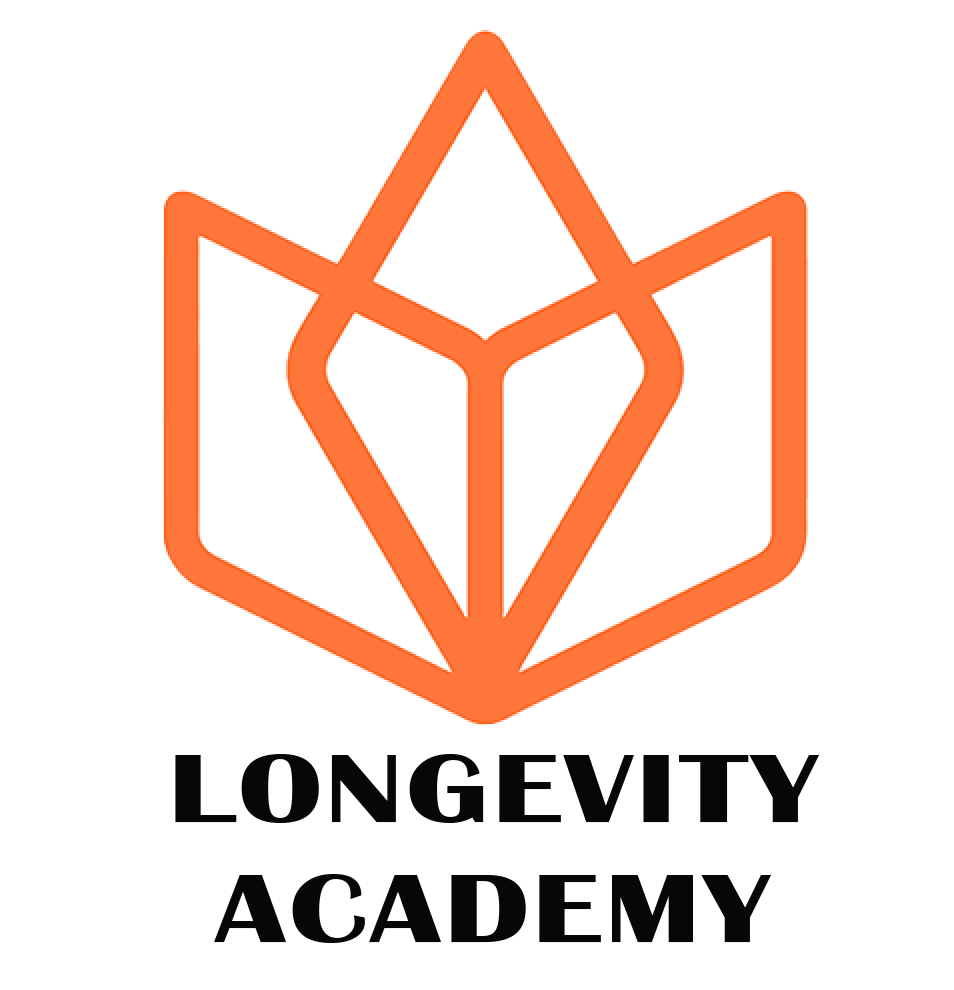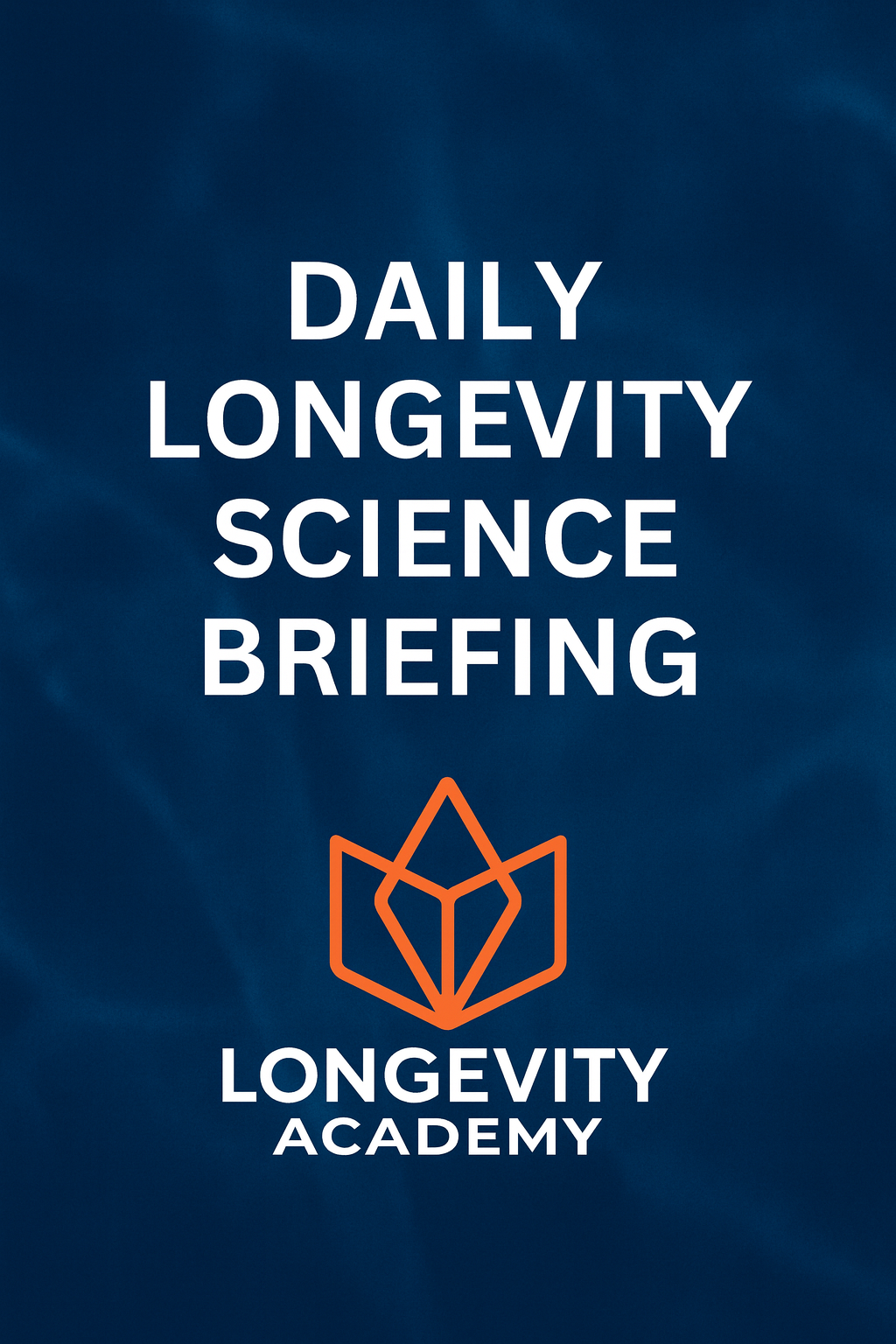Brought to you by the Longevity Academy
Executive Summary
The most significant signal in the last 24 hours is the discovery that degraded fragments of the extracellular matrix (ECM) act as circulating drivers of aging, a finding published in Nature Aging. This study not only provides a new fundamental understanding of a previously overlooked aspect of aging biology but also identifies a potent therapeutic target (NEU1) with a demonstrated 17% lifespan extension in animal models. This represents a major step forward in understanding systemic aging and offers a promising new avenue for pro-longevity interventions. Other key developments include a Phase 3 clinical trial showing biological age rejuvenation via therapeutic plasma exchange, a landmark 8-decade study linking life-course exposures to proteomic aging, and large-scale proteomic studies revealing sex-specific aging trajectories.
What to watch next (next 7–30 days):
•Peer review of preprints: The therapeutic plasma exchange and eight-decade cohort studies are high-impact preprints awaiting peer review. Their publication in major journals will be a key validation step.
•NEU1 inhibitor development: Following the Nature Aging paper, expect announcements regarding preclinical development or plans for Phase 1 trials of NEU1 inhibitors.
•Replication of proteomic findings: The large-scale proteomic studies will likely spur further research to replicate the identified biomarkers in diverse populations.
Ranked Top 5 Table
|
Rank
|
Title
|
Source
|
Published (PT)
|
Evidence Level
|
Domain Tag
|
Overall Score
|
|
1
|
Elastin-derived extracellular matrix fragments drive aging
|
Nature Aging
|
Sep 29, 2025
|
Animal/Human
|
Senescence
|
4.65
|
|
2
|
Therapeutic plasma exchange for biological age rejuvenation
|
medRxiv (Preprint)
|
Aug 8, 2024
|
Human RCT
|
Biomarkers
|
4.2
|
|
3
|
Eight decades of follow-up link life course exposures to proteomic organ aging
|
medRxiv (Preprint)
|
Sep 8, 2025
|
Human Observational
|
Biomarkers
|
4.0
|
|
4
|
Decoding sexually dimorphic proteomic landscapes in aging
|
Communications Medicine
|
Sep 29, 2025
|
Human Observational
|
Biomarkers
|
3.8
|
|
5
|
Agmatinases and TOR pathway regulation in aging
|
Communications Biology
|
Sep 29, 2025
|
In Vitro/Model
|
Metabolism
|
3.1
|
One-pager Summaries
#1. Elastin-derived extracellular matrix fragments drive aging through innate immune activation
•What happened: Researchers discovered that fragments of the extracellular matrix (ECM), particularly elastin, accumulate with age and actively drive the aging process by activating the innate immune system.
•Why it matters (impact): This study shifts the focus of aging research from purely cellular mechanisms to the role of the ECM. It identifies a novel and potent therapeutic target, the NEU1 receptor, and demonstrates that inhibiting it can extend lifespan by up to 17% in mice and alleviate aging phenotypes in multiple species.
•Evidence level: Animal (mice, pigs) and Human observational (n=1,068).
•Study details: The study involved both animal models and a large human cohort. In mice, a NEU1 inhibitor extended lifespan. In the human cohort, elastin-derived fragments were positively correlated with various aging indicators.
•Limitations/caveats: The primary lifespan extension data is from animal models. The human data is correlational. The long-term safety of NEU1 inhibitors in humans is unknown.
•Next milestone: Initiation of Phase I clinical trials for a NEU1 inhibitor.
•Primary link(s): https://www.nature.com/articles/s43587-025-00961-8
•Conflicts/paywall: No conflicts noted. The article is behind a paywall.
#2. Multi-omics analysis of therapeutic plasma exchange for biological age rejuvenation
•What happened: A Phase 3 controlled clinical trial found that therapeutic plasma exchange (TPE) combined with intravenous immunoglobulin (IVIG) can rejuvenate biological age, as measured by multiple epigenetic clocks and other biomarkers.
•Why it matters (impact): This is the first multi-omics study to demonstrate the effectiveness of TPE for biological age rejuvenation in a controlled clinical trial setting. It provides a potential, albeit expensive, intervention to reverse aspects of aging.
•Evidence level: Human RCT (Phase 3).
•Study details: 30 participants were divided into three arms: monthly TPE, biweekly TPE, and biweekly TPE with IVIG. The TPE+IVIG group showed the most significant rejuvenation effects across multiple ‘omics’ layers.
•Limitations/caveats: The study is a preprint and has not yet been peer-reviewed. The sample size is small (n=30). The intervention is costly and not easily accessible.
•Next milestone: Peer review and publication in a major journal.
•Primary link(s): https://www.medrxiv.org/content/10.1101/2024.08.02.24310303.abstract
•Conflicts/paywall: No conflicts noted. Open access.
#3. Eight decades of follow-up link life course exposures to proteomic organ aging and longevity
•What happened: A study of 1,803 individuals followed since their birth in 1946 used proteomic clocks to assess the aging of seven different organs. The study found that life course exposures, such as adversity in adolescence, education, and physical activity, are linked to the rate of biological aging in specific organs decades later.
•Why it matters (impact): This study provides strong evidence for the long-term impact of early and mid-life experiences on biological aging. It identified 143 plasma proteins that predict longevity, offering new avenues for biomarker development and interventions.
•Evidence level: Human observational (longitudinal cohort).
•Study details: The study used data from the MRC National Survey of Health and Development. Proteomic aging was assessed at a mean age of 63.2, and mortality was tracked for the following 15 years.
•Limitations/caveats: The study is a preprint and has not yet been peer-reviewed. As an observational study, it cannot establish causality. The cohort is from the UK and may not be generalizable to other populations.
•Next milestone: Peer review and publication.
•Primary link(s): https://www.medrxiv.org/content/10.1101/2025.09.07.25335188.abstract
•Conflicts/paywall: No conflicts noted. Open access.
#4. Decoding sexually dimorphic proteomic landscapes in the context of aging and mortality
•What happened: A large-scale study of over 53,000 individuals from the UK Biobank developed a new proteomic aging clock, ProteAge, and found significant differences in how males and females age at the protein level.
•Why it matters (impact): This research highlights the importance of considering sex as a biological variable in aging research. It identified hundreds of proteins that are associated with accelerated or decelerated aging in a sex-specific manner, which could lead to more personalized anti-aging strategies.
•Evidence level: Human observational (large-scale cohort).
•Study details: The study used plasma proteomics data from the UK Biobank to build and validate the ProteAge clock. It then analyzed the proteins associated with aging and mortality in males and females separately.
•Limitations/caveats: The study is cross-sectional, meaning it provides a snapshot in time rather than tracking individuals over time. The UK Biobank population is not fully representative of the general population.
•Next milestone: Validation of the findings in longitudinal studies and in more diverse populations.
•Primary link(s): https://www.nature.com/articles/s43856-025-01113-0
•Conflicts/paywall: No conflicts noted. Open access.
#5. Rapalink-1 reveals TOR-dependent genes and an agmatinergic axis-based metabolic feedback regulating TOR activity and lifespan in fission yeast
•What happened: Researchers using fission yeast as a model organism discovered that a new TOR inhibitor, rapalink-1, extends lifespan. They also identified a new metabolic feedback loop involving agmatinase enzymes that helps to regulate the TOR pathway.
•Why it matters (impact): This study uncovers a new layer of complexity in the regulation of the TOR pathway, a key driver of aging. It suggests that the metabolite agmatine, which can be influenced by diet and the gut microbiome, may play a role in aging. The drug rapalink-1 shows promise as a next-generation mTOR inhibitor with potential anti-aging effects.
•Evidence level: In vitro/model organism (fission yeast).
•Study details: The study used genetic and biochemical methods in fission yeast to investigate the effects of rapalink-1 and the role of agmatinases in the TOR pathway.
•Limitations/caveats: The findings are from a simple model organism and need to be validated in mammals. The effects of agmatine supplementation are complex and may not always be beneficial.
•Next milestone: Validation of the findings in mammalian models, such as mice.
•Primary link(s): https://www.nature.com/articles/s42003-025-08731-3
•Conflicts/paywall: No conflicts noted. Open access.
Trends & Signals
•Proteomics as a powerful tool: Three of the top five studies heavily relied on proteomics to develop new aging clocks and identify biomarkers. This highlights the growing importance of proteomics in understanding the molecular basis of aging.
•The rise of preprints: Two of the top three studies are preprints, indicating the increasing speed at which new research is being disseminated, even before formal peer review.
•From correlation to causation: The field is moving from simply identifying correlates of aging to testing interventions that can causally affect the aging process, as seen in the elastin and plasma exchange studies.
Watchlist (near-term)
•Upcoming conference presentations: Keep an eye on presentations at upcoming aging research conferences, such as the American Aging Association (AGE) and Gerontological Society of America (GSA) annual meetings, for the latest data on senolytics, partial reprogramming, and other cutting-edge topics.
•FDA decisions: Monitor for any FDA announcements regarding new clinical trials for aging-related indications or the approval of new biomarkers of aging.
•New preprints on bioRxiv/medRxiv: Continue to scan for new preprints in the aging and longevity space, as these often provide the first glimpse of major new findings.

